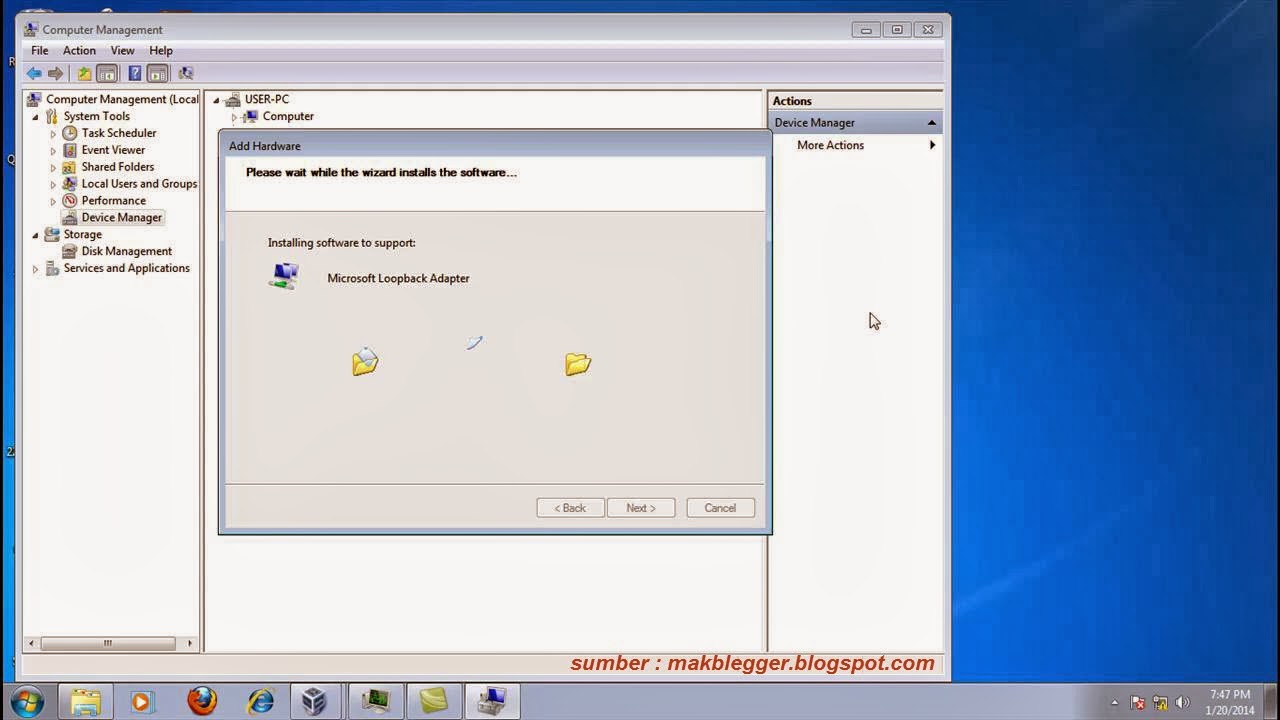

- #WINDOWS LOOPBACK ADAPTER HOW TO#
- #WINDOWS LOOPBACK ADAPTER INSTALL#
- #WINDOWS LOOPBACK ADAPTER DRIVER#
- #WINDOWS LOOPBACK ADAPTER PATCH#
- #WINDOWS LOOPBACK ADAPTER WINDOWS#
#WINDOWS LOOPBACK ADAPTER PATCH#
You will need a typical patch cable, RJ-45 plugs, a crimper, and some heat shrink tubing if you really want it to look professional. It is basically creating a cross-over cable with just one plug.
#WINDOWS LOOPBACK ADAPTER HOW TO#
You can even build one yourself if you know how to work with RJ-45/CAT5 cable. If you do not want to add a virtual Microsoft Loopback Adapter, or cannot because you need it for a router, switch, or other networked device, you can always plug in a physical Loopback Adapter into the ethernet network adapter. Create Your Own Physical Loopback Adapter You will need to assign an IP address and other TCP properties, just as you would for any other interface. You should probably rename this adapter to “Loopback” so it is easy to identify.
#WINDOWS LOOPBACK ADAPTER INSTALL#
In the Completing the Add Hardware Wizard dialog box, click Finish, and then click OK.Īfter you install the adapter, it will appear in the Network Connections folder as a new NIC, such as Local Area Connection 2 (or the next available number).
#WINDOWS LOOPBACK ADAPTER DRIVER#
If a message about driver signing appears, click Continue Anyway.In the Network Adapter list, click Microsoft Loopback Adapter, and then click Next twice.In the Manufacturer list, click Microsoft.In the Common hardware types list, click Network adapters, and then click Next.In the “What do you want the wizard to do?” list, click Install the hardware that I manually select from a list (Advanced), and then click Next.In the Installed hardware list, click Add a new hardware device, and then click Next.“When the Is the hardware connected?” dialog box appears, click Yes, I have already connected the hardware, and then click Next.In the Add Hardware dialog box, click Next.In the System Properties dialog box, on the Hardware tab, click Add Hardware Wizard.In the host operating system, right-click My Computer, and then select Properties or use the Control Panel.
#WINDOWS LOOPBACK ADAPTER WINDOWS#
Install Microsoft Loopback Adapter (varies depending on the Windows OS) However, if you need an actual physical Loopback Adapter, you can either purchase one or simply create one on your own. The following steps describe how to add a Microsoft Loopback Adapter.

The easiest way to add a Loopback Adapter is to add it virtually using the Windows OS.

This may come in very handy when you need to test or verify network connectivity. Click Start, and then click Control Panel. You are all set now and can continue troubleshooting.A Loopback adapter is a testing tool for a virtual network environment where network access is not available. To manually install the Microsoft Loopback adapter in Windows XP, follow these steps: 1. Installing a loopback adapter provides a convenient mechanism to provide a static, non-routable IP address, while at the same time allowing network connectivity. Make sure that the LoopBack Adaper is installed. In the "Select Network Adapter List" select "Microsoft" in the Manufacturer pane and "Microsoft KM-TEST Loopback Adapter" in the network adapter pane.Ĭlick Next and next again to install the loopback adapter and click finish when it is done. In the hardware list choose Network Adapters and click next. If Device Manager comes up, right-click on the computer name at the top of the hardware tree and choose "Add Legacy Hardware" from the pop up context menu.Ĭlick Next and choose "Install the hardware that I manually select from a list (Advanced)" in the "What do you want the wizard to do?" dialog and click next again.

If the Add-Hardware wizard comes up, please skip the part related to Device Manager. This will launch either the Add-Hardware wizard or Device Manager. To launch the Add-Hardware wizard please open an elevated cmd or powershellconsole and type the following command: The new name is "Microsoft KM-TEST Loopback Adapter". Please note that The Microsoft Loopback Adapter was renamed in Windows Server 2012/2012R2.


 0 kommentar(er)
0 kommentar(er)
